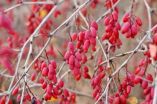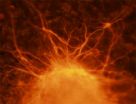(Press-News.org) Exposure to passive smoking in childhood causes irreversible damage to the structure of children's arteries, according to a study published online today (Wednesday) in the European Heart Journal [1].
The thickening of the arteries' walls associated with being exposed to parents' smoke, means that these children will be at greater risk of heart attacks and strokes in later life. The researchers from Tasmania, Australia and Finland say that exposure to both parents smoking in childhood adds an extra 3.3 years to the age of blood vessels when the children reach adulthood.
The study is the first to follow children through to adulthood in order to examine the association between exposure to parental smoking and increased carotid intima-media thickness (IMT) – a measurement of the thickness of the innermost two layers of the arterial wall – in adulthood. It adds further strength to the arguments for banning smoking in areas where children may be present, such as cars.
The study was made up of 2401 participants in the Cardiovascular Risk in Young Finns Study, which started in 1980, and 1375 participants in the Childhood Determinants of Adult Health study, which started in 1985 in Australia. The children were aged between three and 18 at the start of the studies. The researchers asked questions about parents smoking habits and they used ultrasound to measure the thickness of the children's artery walls once they had reached adulthood.
The researchers found that carotid IMT in adulthood was 0.015 mm thicker in those exposed to both parents smoking than in those whose parents did not smoke, increasing from an average of 0.637 mm to 0.652 mm.
"Our study shows that exposure to passive smoke in childhood causes a direct and irreversible damage to the structure of the arteries. Parents, or even those thinking about becoming parents, should quit smoking. This will not only restore their own health but also protect the health of their children into the future," said Dr Seana Gall, a research fellow in cardiovascular epidemiology at the Menzies Research Institute Tasmania and the University of Tasmania.
"While the differences in artery thickness are modest, it is important to consider that they represent the independent effect of a single measure of exposure – that is, whether or not the parents smoked at the start of the studies – some 20 years earlier in a group already at greater risk of heart disease. For example, those with both parents smoking were more likely, as adults, to be smokers or overweight than those whose parents didn't smoke."
The results took account of other factors that could explain the association such as education, the children's smoking habits, physical activity, body mass index, alcohol consumption and biological cardiovascular risk factors such as blood pressure and cholesterol levels in adulthood.
Interestingly, the study did not show an effect if only one parent smoked. "We think that the effect was only apparent with both parents smoking because of the greater overall dose of smoke these children were exposed to," said Dr Gall. "We can speculate that the smoking behaviour of someone in a house with a single adult smoking is different. For example, the parent that smokes might do so outside away from the family, therefore reducing the level of passive smoking. However, as we don't have this type of data, this is only a hypothesis."
Dr Gall and her colleagues had shown previously that exposure to passive smoking in childhood reduced the ability of the main artery in the arm to dilate in response to blood flow in adulthood. This new study adds to the evidence on the dangers of passive smoking for children.
In the paper, the authors write: "Together, these studies suggest a direct and pervasive effect of exposure to environmental cigarette smoke during this period on both the vascular structure and function in adulthood."
They continue: "Reducing young people's exposure to tobacco smoke is a public health priority. Legislation can reduce passive smoke exposure, with restriction of smoking in public places reducing hospitalizations for cardiovascular and respiratory disease. Home smoking bans specifically benefit young people and data from the USA suggest such bans have increased from about 50% in the mid-1990s to 85% in 2006-7, suggesting that exposure to passive smoke at home is declining. Unfortunately, these reductions have largely occurred in higher socio-economic groups, meaning socio-economic inequalities in passive smoke exposure remain. Banning smoking in cars where young people are present, which is enforceable and targeting an environment where exposure is high, could reduce these inequalities. Such legislation already exists in Australia, Canada, and USA. Our results support adoption of all measures that protect young people from passive smoke."
In an accompanying editorial, David Celermajer, Scandrett Professor of Cardiology at the University of Sydney, Australia, and Dr Edmund Lau, clinical associate lecturer at the University of Sydney, call on legislators worldwide to do more to protect children from the harmful effects of tobacco smoke. "Much more work needs to be done to control the tobacco epidemic and it is up to legislators backed by the support of clinicians, scientists, and advocates to end the tobacco epidemic in the 21st century. Today, this is one of our greatest health care priorities," they write.
INFORMATION:
Notes:
[1] "Exposure to parental smoking in childhood or adolescence is associated with increased carotid intima-media thickness in young adults: evidence from the Cardiovascular Risk in Young Finns study and the Childhood Determinants of Adult Health Study", by Seana Gall et al. European Heart Journal. doi:10.1093/eurheartj/ehu049
[2] "Protecting our children from environmental tobacco smoke – one of our great healthcare challenges", by Edmund MT Lau and David S. Celermajer. European Heart Journal, doi:10.1093/eurheartj/ehu098
[3] The study was funded as follows:
Childhood Determinants of Adult Health study: the National Health and Medical Research Council, the National Heart Foundation of Australia, the Tasmanian Community Fund, and Veolia Environmental Services.
Cardiovascular Risk in Young Finns study: Academy of Finland; the Social Insurance Institution of Finland; Kuopio, Tampere and Turku University Hospital Medical Funds; Juho Vainio Foundation; Paavo Nurmi Foundation; Finnish Foundation of Cardiovascular Research; Finnish Cultural Foundation; Tampere Tuberculosis Foundation and Emil Aaltonen Foundation.
Passive smoking causes irreversible damage to children's arteries
2014-03-05
ELSE PRESS RELEASES FROM THIS DATE:
Lower index to ring finger ration associated with higher risk of osteoarthritis in knee
2014-03-05
A new study published online today in the journal Rheumatology has found that the lower the ratio between a person's index finger (2D) and their ring finger (4D), the higher their risk of developing severe osteoarthritis in their knees, requiring a total knee replacement.
Osteoarthritis (OA) is a major public health problem linked with significant disability in knees and hips. Hormonal factors are thought to play a role, which is thought to account for the well documented difference in prevalence of OA between men and women. Anthropological studies have suggested that ...
Are plants more intelligent than we assumed?
2014-03-05
This news release is available in German.
Leipzig. Plants are also able to make complex decisions. At least this is what scientists from the Helmholtz Center for Environmental Research (UFZ) and the University of Göttingen have concluded from their investigations on Barberry (Berberis vulgaris), which is able to abort its own seeds to prevent parasite infestation. The results are the first ecological evidence of complex behaviour in plants. They indicate that this species has a structural memory, is able to differentiate between inner and outer conditions as well ...
Hot on the trail of cellular metabolism
2014-03-05
UCPs or uncoupling proteins are present in mitochondria, the powerhouse of each cell in the body. The functions of most of the five known UCPs remain mysterious (UCP2-UCP5), whereby only the distinct function for UCP1 has thus far been discovered. UCP1 is responsible for heat production when muscle activity is deficient such as is the case with babies and animals in hibernation. The research team at the Department of Physiology and Biophysics at the University of Veterinary Medicine in Vienna were able to provide a fundamental explanatory concept for the function of UCP2 ...
Study shows nearly fivefold increased risk for heart attack after angry outburst
2014-03-05
BOSTON – Call it what you will – getting red in the face, hot under the collar, losing your cool, blowing your top – we all experience anger. And while we know that anger is a normal, sometimes even beneficial emotion, we're also aware of the often harmful connection between anger and health. New research from Beth Israel Deaconess Medical shows an even more compelling reason to think about getting anger in check – a nearly fivefold increase in risk for heart attack in the two hours following outbursts of anger.
"There has been a lot of research on anger; we already ...
Not even freezing cold stops alien species in high altitudes
2014-03-05
They hitchhike with us under the soles of our shoes and muddy car tires. Harsh and cold climates do not seem to stop alien plants from establishing themselves in high altitudes, where they now successfully penetrate the alpine vegetation, according to a study at Umeå University in Sweden and the University of Antwerp, Netherlands.
"Alien plants often gain advantages in their new environment because they lack natural enemies, and in this case the lack of strong competitors amongst alpine plants may be the key to success for generalist native species," says ecologist Ann ...
Horses set to gain health benefits from stem cell advance
2014-03-05
Horses suffering from neurological conditions similar to those that affect humans could be helped by a breakthrough from stem cell scientists.
Researchers who are the first to create working nerve cells from horse stem cells say the advance may pave the way for cell therapies that target conditions similar to motor neurone disease.
The research could also benefit horses affected by grass sickness, a neurological condition that affects around 600 horses a year in the UK.
Little is known about the disease, which causes nerve damage throughout the body. It is untreatable ...
Women's jobs are poorer paid, less flexible and more stressful
2014-03-05
Women's jobs are poorer paid, less flexible, more stressful, and offer fewer promotion opportunities than men's, a large international study has found.
Researchers say that the results disprove the theory that women have voluntarily traded less high-powered jobs in order to have more flexibility for their responsibilities at home.
Professor Haya Stier, of Tel Aviv University, and Professor Meir Yaish, University of Haifa, analysed survey data on the working lives of 8,500 men and 9,000 women in 27 industrialised countries, including the UK.
In a paper published ...
New: An environmentally friendly chemical reaction that does not waste any atoms
2014-03-05
This news release is available in German.
In the Research Group of Nuno Maulide, a chemist working at the University of Vienna, a new chemical synthesis for α-arylated Carbonyl derivatives was developed. Members of this class of substances typically possess interesting biological and pharmacological properties and often find applications as medicines. The new technique developed by the Maulide group, which allows such Carbonyl derivatives to be generated easily, efficiently and in an environmentally friendly manner – without wasting any atoms –, has raised ...
Suicidal ideation among US soldiers begins before enlistment
2014-03-05
Nearly 60% of soldier suicide attempts can be traced to pre-enlistment mental disorders, which are much more common among nondeployed U.S. Army soldiers than demographically similar populations of civilians (25.1% vs. 11.6%), according to a major new study. The vast majority (76.6%) of soldiers with mental disorders say their conditions started before enlistment, researchers found.
These are among the initial results published online today in JAMA Psychiatry based on a survey carried out as part of the Army Study to Assess Risk and Resilience in Servicemembers (Army STARRS), ...
Plant extract offers hope for infant motor neuron therapy
2014-03-05
A chemical found in plants could reduce the symptoms of a rare muscle disease that leaves children with little or no control of their movements.
Scientists have found that a plant pigment called quercetin – found in some fruits, vegetables, herbs and grains – could help to prevent the damage to nerves associated with the childhood form of motor neuron disease.
Their findings could pave the way for new treatments for spinal muscular atrophy (SMA) – also known as floppy baby syndrome – which is a leading genetic cause of death in children.
The team has found that the ...


